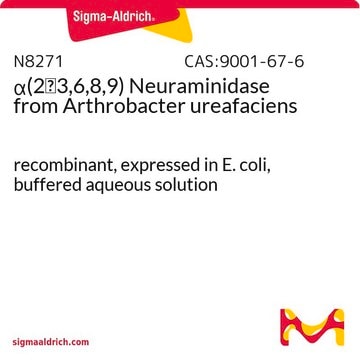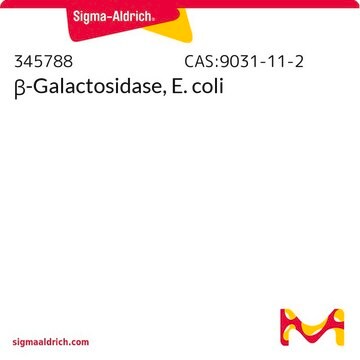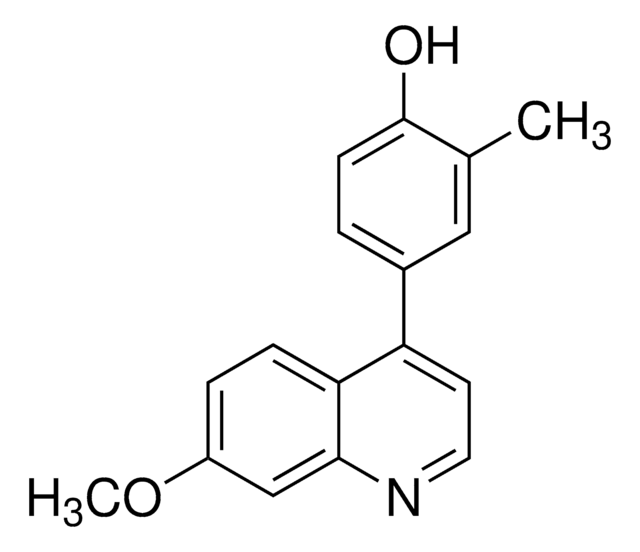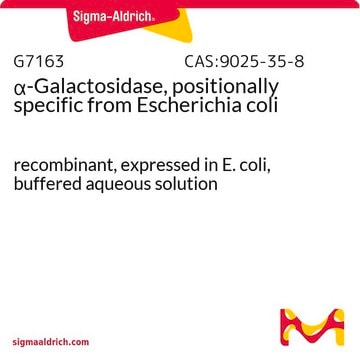G0413
β(1→4)-Galactosidase, positionally specific from Streptococcus pneumoniae
recombinant, expressed in E. coli, buffered aqueous solution
About This Item
Recommended Products
recombinant
expressed in E. coli
Quality Level
form
buffered aqueous solution
specific activity
≥6 units/mg protein
packaging
vial of 0.06 unit
UniProt accession no.
shipped in
wet ice
storage temp.
2-8°C
Gene Information
human ... GLB1(2720)
Related Categories
General description
Application
- as a position-specific enzyme to study its effects in the terminal galactosylation with protective efficacy of glycosphingolipid (GSPL) in mice.
- for the digestion of radioactive oligosaccharides.
- as a position-specific enzymeto study its effects on the virulence profile of avirulent Leishmania donovani clone (A-LD).
Biochem/physiol Actions
Unit Definition
Physical form
Storage Class Code
10 - Combustible liquids
WGK
WGK 3
Flash Point(F)
Not applicable
Flash Point(C)
Not applicable
Regulatory Listings
Regulatory Listings are mainly provided for chemical products. Only limited information can be provided here for non-chemical products. No entry means none of the components are listed. It is the user’s obligation to ensure the safe and legal use of the product.
JAN Code
G0413-BULK:
G0413-1VL:
G0413-20UL-LBL:
G0413-VAR:
G0413-1VL-PW:
Certificates of Analysis (COA)
Search for Certificates of Analysis (COA) by entering the products Lot/Batch Number. Lot and Batch Numbers can be found on a product’s label following the words ‘Lot’ or ‘Batch’.
Already Own This Product?
Find documentation for the products that you have recently purchased in the Document Library.
Customers Also Viewed
Articles
Learn about O-linked glycan strategies, O-glycosidase actions, how to remove sialic acid residues, β-Elimination, and O-glycan modifications.
Our team of scientists has experience in all areas of research including Life Science, Material Science, Chemical Synthesis, Chromatography, Analytical and many others.
Contact Technical Service










